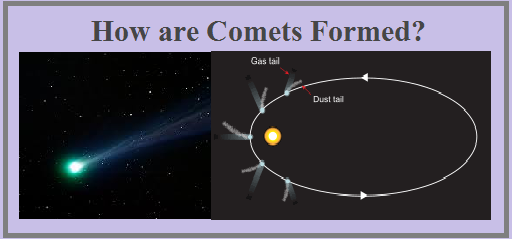


I would like to see all comets, both periodic and non-periodic, receive a numeric suffix to their names whenever there is more than one. Normally, we would number them all in order of discovery, but since the nine periodic comets have already received a number, we would have to number the four non-periodic comets as C/1991 B1 (Shoemaker-Levy 10), C/1991 T2 (Shoemaker-Levy 11), C/1993 K1 (Shoemaker-Levy 12), and C/1994 E2 (Shoemaker-Levy 13). Why afford a numeric suffix to a comet name only when it is a periodic comet? Why not give all comets named “Shoemaker-Levy” a numeric suffix. They have not received a numeric suffix and are all called “Comet Shoemaker-Levy”: C/1991 B1 Shoemaker-Levy C/1991 T2 Shoemaker-Levy C/1993 K1 Shoemaker-Levy C/1994 E2 Shoemaker-Levy However, four additional non-periodic comets were discovered by the Carolyn & Gene Shoemaker and David Levy team. There are a total of nine periodic comets named Shoemaker-Levy. Perhaps the most famous example is Comet Shoemaker-Levy 9 that broke up and crashed into Jupiter during July 1994. Interestingly, if different periodic comets have the same name, they are sequentially numbered. Likewise, the most recent Comet LINEAR (at the time of this writing), C/2017 B3, is a non-periodic comet discovered in 2017 between January 16 and January 31, the third comet discovered during that period of time.
#Comet names full#
After the second perihelion passage, P/1997 A2 (LINEAR) was subsequently given the periodic comet number prefix of 230, so the full designation for this comet is now 230P/1997 A2 (LINEAR). So, we can see that the first Comet LINEAR, P/1997 A2, is a periodic comet discovered in 1997, between January 1 and January 15 of that year, and it was the second comet to be discovered during that period of time. This is then followed by the year of discovery, a letter indicating the half-month of discovery, followed by the numeric order of discovery during the half-month. I/ – an interstellar object that did not originate in our solar system X/ – comet for which no reliable orbit could be calculated (generally, historical comets)ĭ/ – a periodic comet that has disappeared, broken up, or been lostĪ/ – an object that was mistakenly identified as a comet, but is actually a minor planet (asteroid, trans-Neptunian object, etc.)

P/ – a periodic comet (orbital period < 200 years or confirmed observations at more than one perihelion passage)Ĭ/ – non-periodic comet (orbital period ≥ 200 years and confirmed observations at only one perihelion passage) The first Comet LINEAR has a designation of P/1997 A2, and the most recent Comet LINEAR has a designation of C/2017 B3.Ī comet designation starts with one of the following prefixes: How do we distinguish between comets having the same name? Each has a separate comet designation. Pan-STARRS = Panoramic Survey Telescope and Rapid Response System LINEAR = Lincoln Near-Earth Asteroid Research SOHO = Solar and Heliospheric Observatory (spacecraft) McNaught (1956-), all of the above comets were named after various semi-automated surveys. As of this writing, there are 3,635 comets named SOHO, over 300 comets named LINEAR, some 179 comets named PANSTARRS, 82 comets named McNaught, 62 comets named NEAT, and so on.Įxcept for the comets discovered by Scottish-Australian astronomer Robert H.


 0 kommentar(er)
0 kommentar(er)
